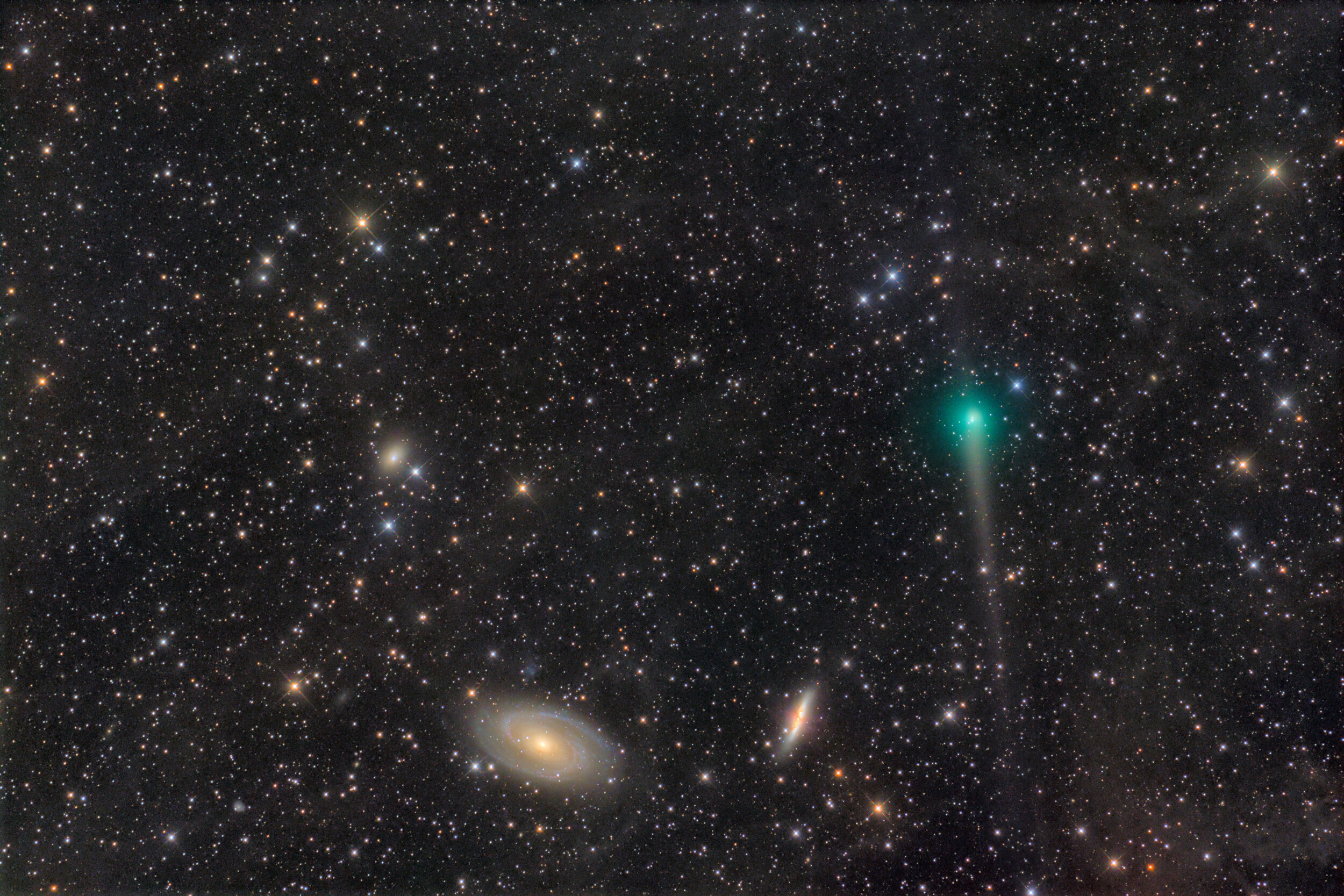
AAPOD2 Image Archives
Comet A1 Leonard
Image Description:
C /. A1 Leonard, the first comet discovered by mankind in the year of., has recently become better. According to predictions, it will become the brightest comet of the year, and is expected to reach a level visible to the naked eye next month. Of course, don't expect to compare to last year's new intelligent comet, at best, a little comet that is visible in a binoscope.
Comet Leonard is a long-period comet, previously orbital period of about years. On December, it will fly Venus, most recently only kilometers. On January, next year, it will pass through the close point of this return. Later, it will move further along a double-curved orbit, likely never to return near the Sun again.
This is sometimes the same in life, don't know how many people or things will be seen after first sight?
November,,,,,, Newton reflector + QHY268M Black and White Refrigeration Camera + Ulong 2 LRGB Filter + Eton CEM120 Equator, focal length 1000 mm, f / 4, refrigeration-15°C, 55 Zhang * seconds, accumulates exposure to minutes.
Copyright: Steed Yu
Iris Nebula and its interstellar dust friends
Image Description and Details :
The Iris Nebula is a reflection nebula in the constellation Cepheus, which is actually a patch of interstellar dust illuminated by a blue star. In the 2-panel-mosaic wide-field image, you can see that this area of the sky is actually filled with interstellar dust, but the other dust is not illuminated by nearby stars like the Iris Nebula. Image Telescope/Lens: SharpStar 150 2.8 HNTImage Camera: QHYCCD QHY268CMount: iOptron CEM 70Frames :301 * 300sIntegration: 25.1 hoursLocation: Milky Way Observatory, Kangbao County, Zhangjiakou, Hebei Province, China.
Copyright Information: Steed Yu
flame star IC405 to the ′′ pond ′′ IC410,
From the flame star IC405 to the ′′ pond ′′ IC410, the celestial area in the Giffus is filled with ionized aluminum clouds, the original tone is dominated by red -- until a comet, C / 2020 M3 ATLAS, Dragging the short tail to break into here, bringing a piece of green.
In order to shoot the comet, QHY268C was specially adjusted to high gain mode, Gain 56, Offset 10, with a 100-second short exposure to prevent the comet from dragging. As a result, the comet was captured, but the camera hung up, the infinite card read out, and had to return to the factory for repair. Now, even the equatorial meter is starting to go crazy for unknown reasons.
It seems that the comet is really a broom star......
Location: Hebei Kangbo Galaxy Observatory
Taken on December 9-10, 2020
Telescope: 150 2.8 HNT
Camera: QHY268c
Equator: Eaton iOptron CEM70
Guide: QHYCCD OAG-M
Guide Star Camera: QHY5L-II-M
Number of sheets taken: 206
Single exposure: 100 seconds
Cumulative exposure: 5.7 hours
APT: APT
PixInsight, PhotoShop
Copyright: Steed Yu
Comet, Galaxies, and IFN Nebula
Comet C/2017 T2 PanSTARRS, dragging two long and straight dust tails, passed by near the galaxies M81 and M82.
In this long-exposure photo, some nebulae can also be seen filling the entire field of view. They are Integrated Flux Nebula. Unlike ordinary nebulae illuminated by nearby stars, IFN is far away from the Galaxy disk and is illuminated by the stars in the entire galaxy.





